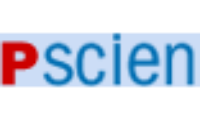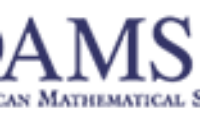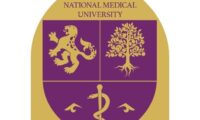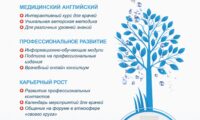Алынды: 11.12.2023 Қабылданды: 30.01.2024 Онлайн жарияланды: 29.02.2024
УДК: 616.5-002
DOI 10.53511/PHARMKAZ.2024.33.42.026
А.Н. Ахмадьяр1, С.С. Бүркітбаева1, Е.Д. Сүлейменова1, Ж.И. Аубакирова1
1КеАҚ «Астана медициналық университеті» , Астана, Қазақстан
БАКТЕРИЯҒА ҚАРСЫ ЗАТТАРДЫҢ ПЛЕЙОТРАПТЫ ӘСЕРЛЕРІ (ШОЛУ)
Түйін: Антибиотиктердің бактерияларға қарсы қасиеттерінен басқа, олардың әсер ету механизмдерінің көптігінен көрінетін плейотропты әсерлері кейінгі кезде қызығушылық танытуда, атап
айтқанда, оған антибиотиктердің антикоагулянттық, иммуномодуляциялық, вирустар мен қабынуға қарсы әсерлері жатады.
Клиникалық қолдану үшін антибиотиктердің плейотропты қасиеттерінің негізгі себептерінің көрсеткіші ретінде Scopus, PubMed, Google Scholar, Cochrane, Elibrary ғылыми базаларынан бактерияға қарсы препараттарды қарастырдық.
Бұл мақалада антибиотиктердің келесі плейотропты қасиеттері қарастырылады: β-лактамды антибиотиктердің және кең спектрлі антибиотиктердің гемостазға әсері; макролидтер мен тетрациклиндердің иммунитетке және қабынуға, вирустық инфекцияларға және фторхинолондарға әсері.
Тұтастай алғанда, антибиотиктердің плейотропты әсер етуі мүмкін екендігі туралы бүгінгі күнге дейін аз дәлелдер бар, бірақ олардың клиникалық маңыздылығын одан әрі клиникалық зерттеулерсіз жоққа шығаруға болмайды, олардың маңыздылығы даусыз.
Түйінді сөздер: антибиотик, макролидтер, тетрациклиндер, фторхинолондар, доксициклин, цефалоспориндер, плейотропты, гемостаз, вирусқа қарсы, иммуномодуляция.
ӘДЕБИЕТТЕР ТІЗІМІ
1 Cazenave JP, Packham MA, Guccione MA, Mustard JF. Effects of penicillin G on platelet aggregation, release, and adherence to collagen. Proc Soc Exp
Biol Med. 1973; 142:159–159.
2 Burroughs SF, Johnson GJ. Beta-lactam antibiotics inhibit agonist-stimulated platelet calcium influx. Thromb Haemost. 1993;69: 503–503.
3 Shattil SJ, Bennett JS, McDonough M, Turnbull J. Carbenicillin and penicillin G inhibit platelet function in vitro by impairing the interaction of agonists with the
platelet surface. J Clin Invest. 1980; 65:329–329. doi: 10.1172/JCI109676.
4 Johnson GJ, Rao GH, White JG. Platelet dysfunction induced by parenteral carbenicillin and ticarcillin. Studies of the dose-response relationship and
mechanism of action in dogs. Am J Pathol. 1978; 91:85–85.
5 Burroughs SF, Johnson GJ. Beta-lactam antibiotic-induced platelet dysfunction: evidence for irreversible inhibition of platelet activation in vitro and in vivo
after prolonged exposure to penicillin. Blood. 1990;75:1473–1473.
6 Brown CH, Natelson EA, Bradshaw W, Williams TW Jr, Alfrey CP Jr. The hemostatic defect produced by carbenicillin. N Engl J Med. 1974; 291:265–265.
doi: 10.1056/NEJM197408082910601.
7 Shirakawa H, Komai M, Kimura S. Antibiotic-induced vitamin K deficiency and the role of the presence of intestinal flora. Int J Vitam Nutr Res. 1990;
60(8):245–51.
8 Kodama N, Matsumoto S, Matsubayashi S. A susupicious case of cefmetazole-induced hypoprothrombinemia. J Gen Fam Med. 2017; 5:258–260. doi:
10.1002/jgf2.18.
9 Shearer MJ, Bechtold H, Andrassy K, Koderisch J, McCarthy PT, Trenk D, et al. Mechanism of cephalosporin-induced hypoprothrombinemia: relation to
cephalosporin side chain, vitamin K metabolism, and vitamin K status. J Clin Pharmacol. 1988; 1:88–95. doi: 10.1002/j.1552-4604.1988.tb03106.x.
10 Sung Geun Yoon, Eun Mi Kim, Myoung Hye Park, Ho Sung Kwak. Augmentin – Induced Coagulation Abnormalities as Measured by Thromboelastography.
Korean Journal of Anesthesiology 1997; 33(5):912-917. doi.org/10.4097/kjae.1997.33.5.912.
11 S Preyer, H Luckhaupt. Antibiotics and blood coagulation–current references for the ENT physicianLaryngol Rhinol Otol (Stuttg). 1987. Feb; 66(2):107-9.
PMID: 3573885.
12 Franz T. et al. Pleiotropic effects of antibiotics on T cell metabolism and T cell-mediated immunity //Frontiers in Microbiology. – 2022. – Т. 13. – С. 975436.
13 Buck M. D. et al. Metabolic instruction of immunity //Cell. – 2017. – Т. 169. – №. 4. – С. 570-586.
14 Vaeth M. et al. Store-operated Ca2+ entry controls clonal expansion of T cells through metabolic reprogramming //Immunity. – 2017. – Т. 47. – №. 4. – С.
664-679. e6.
15 Hutchings M. I., Truman A. W., Wilkinson B. Antibiotics: past, present and future //Current opinion in microbiology. – 2019. – Т. 51. – С. 72-80.
16 Bally J. et al. Disk mass limits and lifetimes of externally irradiated young stellar objects embedded in the Orion Nebula //The Astronomical Journal. – 1998.
– Т. 116. – №. 2. – С. 854.
17 Dalhoff A., Shalit I. Immunomodulatory effects of quinolones //The Lancet infectious diseases. – 2003. – Т. 3. – №. 6. – С. 359-371.
18 Becker A. et al. Extracellular vesicles in cancer: cell-to-cell mediators of metastasis //Cancer cell. – 2016. – Т. 30. – №. 6. – С. 836-848.
19 Khan A. A. et al. Protection against lipopolysaccharide-induced death by fluoroquinolones //Antimicrobial agents and chemotherapy. – 2000. – Т. 44. – №.
11. – С. 3169-3173.
20 Leach K. L. et al. The site of action of oxazolidinone antibiotics in living bacteria and in human mitochondria //Molecular cell. – 2007. – Т. 26. – №. 3. – С.
393-402.
21 Seifert L. et al. The most N-terminal region of THSD7A is the predominant target for autoimmunity in THSD7A-associated membranous nephropathy // Journal of the American Society of Nephrology: JASN. – 2018. – Т. 29. – №. 5. – С. 1536.
22 Matsui S., Ogata Y. Effects of miR-223 on expression of IL-1β and IL-6 in human gingival fibroblasts //Journal of oral science. – 2016. – Т. 58. – №. 1. –
С. 101-108.
23 Williams K. L. et al. The CATERPILLER protein Monarch-1 is an antagonist of Toll-like receptor-, tumor necrosis factor α-, and Mycobacterium tuberculosisinduced pro-inflammatory signals //Journal of Biological Chemistry. – 2005. – Т. 280. – №. 48. – С. 39914-39924.
24 Almeida L. et al. CD4+ T-cell differentiation and function: Unifying glycolysis, fatty acid oxidation, polyamines NAD mitochondria //Journal of Allergy and
Clinical Immunology. – 2021. – Т. 148. – №. 1. – С. 16-32.
25 Dalhoff A, Shalit I. Immunomodulatory effects of quinolones. Lancet Infect Dis. 2003; 3(6):359–71.
26 Dalhoff A. Immunomodulatory activities of fluoroquinolones. Infection. 2005; 33 Suppl 2:55–70.
27 Akamatsu H, Niwa Y, Sasaki H, Matoba Y, Asada Y, Horio T. Effect of pyridone carboxylic acid antimicrobials on the generation of reactive oxygen species
in vitro. J Int Med Res. 1996; 24(4):345–51.
28 Tazi KA, Moreau R, Hervé P, Dauvergne A, Cazals-Hatem D, Bert F, et al. Norfloxacin reduces aortic NO synthases and proinflammatory cytokine upregulation in cirrhotic rats: role of Akt signaling. Gastroenterology. 2005; 129(1):303–14
29 Akaike T, Noguchi Y, Ijiri S, Setoguchi K, Suga M, Zheng YM, et al. Pathogenesis of influenza virusinduced pneumonia: involvement of both nitric oxide and
oxygen radicals. Proc Natl Acad Sci U S A.1996; 93(6):2448–53.
30 Enoki Y, Ishima Y, Tanaka R, Sato K, Kimachi K, Shirai T, et al. (2015) Pleiotropic Effects of Levofloxacin, Fluoroquinolone Antibiotics, against Influenza
Virus-Induced Lung Injury. PLoS ONE 10 (6): e0130248. doi:10.1371/journal.pone.0130248.
31 Karampela I, Dalamaga M. Could respiratory fluoroquinolones, levofloxacin and moxifloxacin, prove to be beneficial as an adjunct treatment in COVID-19?
Arch Med Res. 2020; 51:741-742., US Food and Drug Administration. Drug Safety Communication: FDA warns about increased risk of ruptures or tears in the
aorta blood vessel with fluoroquinolone antibiotics in certain patients. 2018.
32 Zhang J. Z., Ward K. W. Besifloxacin, a novel fluoroquinolone antimicrobial agent, exhibits potent inhibition of pro-inflammatory cytokines in human THP-1
monocytes //Journal of antimicrobial chemotherapy. – 2008. – Т. 61. – №. 1. – С. 111-116.
33 Zusso M. et al. Ciprofloxacin and levofloxacin attenuate microglia inflammatory response via TLR4/NF-kB pathway //Journal of neuroinflammation. – 2019.
– Т. 16. – №. 1. – С. 1-12.
34 Vincent J. Venditto, Dalia Haydar, Ahmed Abdel-Latif, et al. Immunomodulatory Effects of Azithromycin Revisited: Potential Applications to COVID-19 Front
Immunol. 2021; 12: 574425. Published online 2021 Feb 12. doi: 10.3389/fimmu.2021.574425.
35 Janet Sultana, Paola Maria Cutroneo, Salvatore Crisafulli, Gabriele Puglisi, Gaetano Caramori, Gianluca Trifirò Azithromycin in COVID-19 Patients:
Pharmacological Mechanism, Clinical Evidence and Prescribing Guidelines Drug Saf. 2020 Jul 21: 1–8.
36 Touret F, Gilles M, Barral K, Nougairède A, van Helden J, Decroly E, de Lamballerie X, Coutard B In vitro screening of a FDA approved chemical library
reveals potential inhibitors of SARS-CoV-2 replication. Sci Rep. 2020 Aug 4; 10 (1) : 13093.
37 Du X, Zuo X, Meng F, Wu F, Zhao X, Li C, Cheng G, Qin FX Combinatorial screening of a panel of FDA-approved drugs identifies several candidates with
anti-Ebola activities. Biochem Biophys Res Commun. 2020, Feb 19; 522(4):862-868.
38 Retallack H, Di Lullo E, Arias C, Knopp KA, Laurie MT, Sandoval-Espinosa C, et al. Zika virus cell tropism in the developing human brain and inhibition by
azithromycin. Proc Natl Acad Sci USA. 2016; 113: 14408–14413.
39 Wu YH, Tseng CK, Lin CK, Wei CK, Lee JC, Young KC. ICR suckling mouse model of Zika virus infection for disease modeling and drug validation. PLoS
Negl Trop Dis. 2018; 12: e0006848. doi: 10.1371/journal.pntd.0006848.
40 Li C, Zu S, Deng YQ, Li D, Parvatiyar K, Quanquin N, et al. Azithromycin protects against Zika virus infection by upregulating virus-induced type I and III
interferon responses. Antimicrob Agents Chemother. 2019 doi: 10.1128/aac.00394-19.
41 Tran DH, Sugamata R, Hirose T, Suzuki S, Noguchi Y, Sugawara A, et al. Azithromycin, a 15-membered macrolide antibiotic, inhibits influenza (H1N1)pdm09
virus infection by interfering with virus internalization process. J Antibiot (Tokyo). 2019; 72:759–768.
42 Mosquera RA, De Jesus-Rojas W, Stark JM, Yadav A, Jon CK, Atkins CL, et al. Role of prophylactic azithromycin to reduce airway inflammation and mortality
in a RSV mouse infection model. Pediatr Pulmonol. 2018; 53:567–574.
43 Beigelman A, Isaacson-Schmid M, Sajol G, Baty J, Rodriguez OM, Leege E, et al. Randomized trial to evaluate azithromycin’s effects on serum and upper
airway IL-8 levels and recurrent wheezing in infants with respiratory syncytial virus bronchiolitis. J Allergy Clin Immunol. 2015; 135:1171–1178.
44 Andreani J, Le Bideau M, Duflot I, Jardot P, Rollanda C, Boxberger M, et al. In vitro testing of hydroxychloroquine and azithromycin on SARS-CoV-2 shows
synergistic effect. Microb Pathog. 2020; 25(145):104228. doi: 10.1016/j.micpath.2020.104228.
45 Zeng S, Meng X, Huang Q, Lei N, Zeng L, Jiang X, et al. Spiramycin and azithromycin, safe for administration to children, exert antiviral activity against
enterovirus A71 in vitro and in vivo. Int J Antimicrob Agents. 2019; 53:362–369.
46 Gautret P, Lagier JC, Parola P, Hoang VT, Meddeb L, Mailhe M, et al. Hydroxychloroquine and azithromycin as a treatment of COVID-19: results of an openlabel non-randomized clinical trial. Int J Antimicrob Agents. 2020 doi: 10.1016/j.ijantimicag.2020.105949
47 Beigelman A, Isaacson-Schmid M, Sajol G, Baty J, Rodriguez OM, Leege E, et al. Randomized trial to evaluate azithromycin’s effects on serum and upper
airway IL-8 levels and recurrent wheezing in infants with respiratory syncytial virus bronchiolitis. J Allergy Clin Immunol. 2015; 135:1171–1178
48 Yao X, Ye F, Zhang M, Cui C, Huang B, Niu P, et al. In vitro antiviral activity and projection of optimized dosing design of hydroxychloroquine for the treatment
of Severe Acute Respiratory Syndrome Coronavirus 2 (SARS-CoV-2) Clin Infect Dis. 2020 doi: 10.1093/cid/ciaa237.
49 Tran DH, Sugamata R, Hirose T, Suzuki S, Noguchi Y, Sugawara A, et al. Azithromycin, a 15-membered macrolide antibiotic, inhibits influenza (H1N1)pdm09
virus infection by interfering with virus internalization process. J Antibiot (Tokyo). 2019; 72:759–768.
50 Schögler A, Kopf BS, Edwards MR, Johnston SL, Casaulta C, Kieninger E, et al. Novel antiviral properties of azithromycin in cystic fibrosis airway epithelial
cells. Eur Respir J. 2015; 45:428–39.
51 Menzel M, Akbarshahi H, Bjermer L, Uller L. Azithromycin induces anti-viral effects in cultured bronchial epithelial cells from COPD patients. Sci Rep. 2016;
6 28698. doi: 10.1038/srep 28698.
52 Altenburg J, de Graaff CS, Stienstra Y, Sloos JH, van Haren EH, Koppers RJ, van der Werf TS, Boersma WG Effect of azithromycin maintenance treatment
on infectious exacerbations among patients with non-cystic fibrosis bronchiectasis: the BAT randomized controlled trial. JAMA. 2013, Mar 27; 309(12):1251-9.
53 Feola DJ, Garvy BA, Cory TJ, Birket SE, Hoy H, Hayes D Jr, Murphy BS Azithromycin alters macrophage phenotype and pulmonary compartmentalization
during lung infection with Pseudomonas. Antimicrob Agents Chemother. 2010, Jun; 54(6):2437-47.
54 Min JY, Jang YJ Macrolide therapy in respiratory viral infections. Mediators Inflamm. 2012; 2012():649570.
55 Poschet J., Perkett E., Timmins G., Deretic V. Azithromycin and ciprofloxacin have a chloroquine-like effect on respiratory epithelial cells. bioRxiv. 2020 doi:
10.1101/2020.03.29.008631.
56 Kawamura K, Ichikado K, Suga M, Yoshioka M. Efficacy of azithromycin for treatment of acute exacerbation of chronic fibrosing interstitial pneumonia: a
prospective, open-label study with historical controls. Respiration. 2014; 87: 478–484.
57 Bush A., Cunningham S, de Blic J, Barbato A, Clement A, Epaud R, on behalf of the chILD-EU Collaboration et al. European protocols for the diagnosis
and initial treatment of interstitial lung disease in children. Thorax. 2015; 70:1078–1084.
58 Negrette A (1960) Encefalitis epidémica. Invest Clin 1:13–34.
59 Negrette A, Mosquera J (1974) Epidemia de encefalitis de 1959 en Maracaibo (San Francisco), Estado Zulia, Venezuela. Manifestaciones clínicas y
terapéutica antibiótica. Invest Clin 15:11–44.
60 Negrette A, Maso-Dominguez J, Rolling CL (1964) Mononucleosis Infecciosa epidémica. Invest Clin 5:49–53.
61 Negrette A (1968a) Encefalitis equina venezolana. Leucocitos vacuolados. Invest Clin 26:97–107.
62 Negrette A (1968b) Parálisis facial y tetraciclina. Invest Clin 26:5–6.
63 Negrette A (1980) Tetraciclina y virus pequeños. Editorial. Invest Clin 21:235–238.
64 Negrette A (1990) Tetraciclina y Sida. Invest Clin 31:117–119.
65 Kraus RL, Pasieczny R, Lariosa-Willingham K, Turner MS, Jiang A, Trauger JW (2005) Antioxidant properties of minocycline: neuroprotection in an oxidative
stress assay and direct radical-scavenging activity. J Neurochem 94:819–827.
66 Lemaitre M, Guetard D, Henin Y, Montagnier L, Zerial A (1990) Protective activity of tetracycline analogs against the cytopathic effect of the human
immunodeficiency viruses in CEM cells. Res Virol 141:5–16.
67 Si Q, Cosenza M, Kim MO, Zhao ML, Brownlee M, Goldstein H (2004) A novel action of minocycline: inhibition of human immunodeficiency virus type 1
infection in microglia. J Neurovirol 10:284–292.
68 Song H, Fares M, Maguire KR, Sidén A, Potácová Z (2014) Cytotoxic effects of tetracycline analogues (doxycycline, minocycline and COL-3) in acute
myeloid leukemia HL-60 cells. PLoS ONE 9:e114457. https://doi.org/10.1371/journal.pone.0114457.
69 Ruiz-Moreno C, Velez-Pardo C, Jimenez-Del-Rio M (2018) Minocycline induces apoptosis in acute lymphoblastic leukemia Jurkat cells. Toxicol In Vitro
50:336–346.
70 Zhang J. Z., Ward K. W. Besifloxacin, a novel fluoroquinolone antimicrobial agent, exhibits potent inhibition of pro-inflammatory cytokines in human THP-1
monocytes //Journal of antimicrobial chemotherapy. – 2008. – Т. 61. – №. 1. – С. 111-116.
71 Brenes-Salazar JA. Minocycline: A bacteriostatic antibiotic with pleiotropic cardioprotective effects. Can J Physiol Pharmacol 2015; 93:863-6.
72 Salameh A, Halling M, Seidel T, Dhein S. Effects of minocycline on parameters of cardiovascular recovery after cardioplegic arrest in a rabbit Langendorff
heart model. Clin Exp Pharmacol Physiol 2015; 42:1258-65.
73 Romero-Perez D, Fricovsky E, Yamasaki KG, Griffin M, BarrazaHidalgo M, Dillmann W, et al. Cardiac uptake of minocycline and mechanisms for in vivo
cardioprotection. JACC 2008; 52: 1086-94.


































